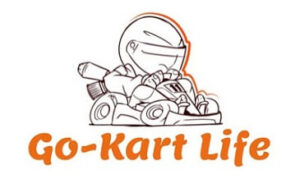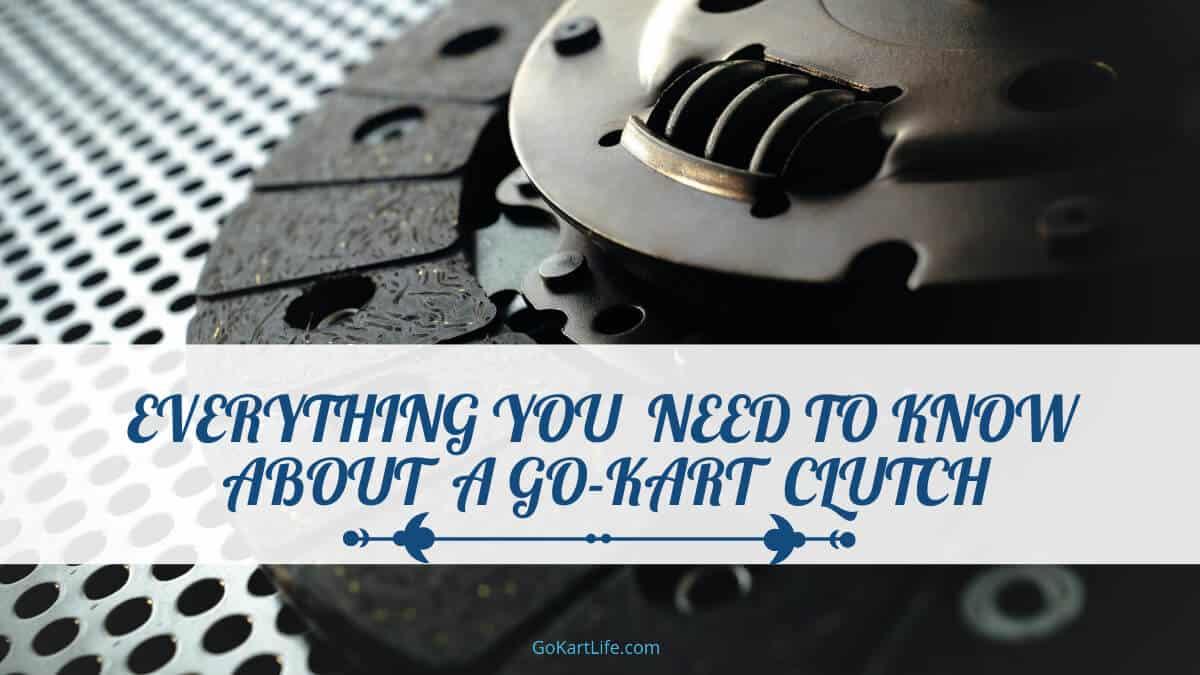Do you want to unleash your inner speed demon? With a go-kart clutch, you can do just that! Whether you’re an experienced racer or a newbie looking for some thrill, the ultimate guide to go-kart clutches will show you how to get up and running.
Want to hit top speeds on the track? A good clutch is essential for achieving maximum performance from your engine. You’ll need one explicitly tailored for karts to ensure everything runs smoothly. We’ll help you pick the right model based on its torque capacity and design features. Plus, we’ll give you tips on how best to use it so that you can maximize your racing potential!
Ready to dig into this exciting world of go-karting? This ultimate guide demystifies all aspects of selecting and using a go-kart clutch – giving you what it takes to become a master driver with confidence. So jump in and let’s get started – it’s time to experience the freedom of karting like never before!
Why Is A Clutch Needed On A Go-Kart?
The freedom to explore the world at your own pace, with no boundaries or restrictions – that’s what a go-kart offers. But to experience this joyous ride, you need the right equipment – a clutch. A centrifugal clutch is essential to any kart as it helps control engine speed and gear ratio for optimal performance.
A clutch is needed on a go-kart to transfer power from the engine to the wheels. The engine would be directly connected to the wheels without a clutch, causing the go-kart to move even when stopped constantly.
The clutch allows the engine to idle and disengage from the wheels and then engage and transfer power when the go-kart needs to move. This enables the go-kart to start, stop, and change speeds smoothly, preventing damage to the engine and other components. A clutch is a crucial component of a go-kart that enables it to operate safely and effectively.
To understand how a clutch works, we must first examine its components, including the crankshaft, flywheel, clutch drum, and clutch shoes.
| Components | Function |
|---|---|
| Crankshaft | Connects to the engine and transfers power to other vehicle parts, such as wheels and gears. |
| Flywheel | Stores energy by spinning around the crankshaft when power from the engine is applied. |
| Clutch drum | Contains two spring-loaded plates known as ‘clutch shoes,’ which provide friction between the flywheel and transmission when needed. |
| Clutch shoes | It contains two spring-loaded plates known as ‘clutch shoes,’ which provide friction between the flywheel and transmission when needed. |
When engaged through either manual or automated means (such as throttle control), these springs cause both sides of the plate to move away while pushing against one another until they reach equilibrium. This action creates enough pressure to transfer torque from the engine to the drive train so that user can accelerate their kart quickly without putting extra strain on car components like brakes or suspension systems. Ultimately, this allows riders to enjoy seamless transitions with minimal effort!
How A Go-Kart Clutch Works
A go-kart clutch is critical for powering the rear wheels and enabling speed control. It’s essential for any go-kart enthusiast who wants to get the most out of their karting experience. This section will explore how a go-kart clutch works and its key components.
The primary purpose of a go-kart clutch is to engage and disengage the engine’s power to the drive train, allowing the kart to start moving and change speed smoothly. The clutch system allows the engine to idle without causing the wheels to turn, and when the driver applies the throttle, the clutch transfers power from the engine to the wheels. The clutch also helps to protect the engine and other components of the kart by reducing stress on the system during acceleration and shifting.
Here are the steps of how a go-kart clutch works:
- The driving shaft connects to the shoes through spiders and springs, causing the shoes to rotate along the shaft axis.
- The shoes move outward due to a centrifugal force opposite to the spring force, stretching the springs.
- As the shoes continue to move outward, the spring force increases until a certain rpm is reached.
- At this point, the shoes engage with the clutch drum.
- The shoes have a friction lining that applies force to the drum when they come in contact with it, causing the drum and sprocket to move.
- Although your clutch may not resemble the diagrams, the working principle remains the same.
- Your clutch likely has a circular spring, with the shoes surrounding the spring.
- As the engine shaft rotates, the shoes rotate along with the spring.
- The centrifugal force causes the spring to expand and develop a spring force in the opposite direction.
- Finally, the drum rotates due to the friction force from the shoes, causing your go-kart to move.
In addition, clutch brakes can be used as an alternative way to slow down your kart when necessary; they work similarly but instead rely on the heat generated through braking action rather than using mechanical means such as gears or pulleys like with other types of clutches.
Types Of Clutches Used In Go-Karts
Choosing the right clutch for a go-kart depends on several factors, such as cost, performance, durability, and ease of use. Several types of clutches are used in go-karts, each with advantages and disadvantages.
- Centrifugal Clutches: These are the most common type of clutch used in go-karts. They use centrifugal force to engage and disengage the load, making them beginner-friendly and easy to mount. Some higher-end versions can be adjusted to engage only at specific RPMs.
- Variable Transmission Clutches: These clutches allow go-karts to reach higher speeds even at lower engine speeds. They are more advanced and require careful consideration of horsepower and ratios to work properly.
- Belt Clutches: These are not the most efficient option but can be used in certain circumstances. They require careful consideration of horsepower and ratios and are not typically used in high-performance go-karts.
- Liquid Medium Clutches: These are a type of centrifugal clutch that uses oil to lubricate and reduce heat damage. They are ideal for go-kart tracks that see a lot of use and require a durable, long-lasting clutch.
- Electric Clutches: These are battery-powered and more expensive than other options but are a great option for eco-friendly go-karts. They use an electromagnet to spin an iron disk and engage the load.
- Hydraulic System Clutches: These are the most versatile, complicated, and expensive type of clutch. They use a hydraulic motor inside a pump to engage the load and require proper maintenance to maintain efficiency. They are typically used in high-performance go-karts or racing applications.
How To Maintain Your Go-Kart Clutch
Maintaining your go-kart clutch ensures a smooth ride and peak engine performance. Taking good care of it will also help extend its life, saving you money in the long run. Here are some tips on how to keep your kart’s clutch running like new:
- Check for signs of wear – Pay attention to any noises coming from the drivetrain, as this could indicate something wrong with the clutch or other components in the system. Inspect friction materials such as springs and plates for any damages, warps, tears, etc., which can result in poor power transfer solutions.
- Keep it lubricated – Lubricate all moving parts, including bearings and sprockets, regularly using a high-quality lubricant suitable for your go-kart model; never use grease! This helps reduce friction between the flywheel and engine crankshaft while allowing smoother shifts between gears at higher RPMs.
- Replace worn-out parts – Due to normal wear and tear, certain parts may need replacing, such as clutches, disks/plates, shafts, seals, and gaskets. Doing so will improve shifting performance and increase energy efficiency when driving your kart.
It’s important not to neglect regular maintenance checks on your go-kart clutch if you want it to perform optimally throughout its lifetime. After all, taking proper care now can save you more trouble!
Mistakes That Are Destroying Your Clutch
Your go-kart clutch is a complex system; even the smallest mistake can cause it to fail. It’s like a ticking time bomb waiting to let loose. To keep your clutch running smoothly and ensure that you’re getting optimal performance from it, avoid these common mistakes.
- Driving too slowly, for example, can cause the clutch to overheat and wear out prematurely. This is because some types of clutches, such as centrifugal clutches, only engage fully at higher speeds. Driving at these speeds allows the clutch to cool down and avoid overheating.
- Short stop-and-go driving can also wear out the clutch due to the strain of engaging and disengaging. Instead, it’s better to drive for longer periods without stopping abruptly.
- Riding the brake is another common mistake that can wear out the clutch prematurely. New drivers may do this because they are unfamiliar with the difference between the brake and gas pedals. However, driving with your foot on the brake can cause conflicting movements and strain the clutch.
- Mismatching tire size is another issue that can cause problems for the clutch. Larger tires than the original size can strain the clutch and cause it to struggle to perform optimally.
- The weight of the go-kart, driver, and passenger is also a factor that can affect the clutch’s lifespan. Most clutches are designed to handle a certain amount of weight, so exceeding this limit can shorten their lifespan.
- Finally, using restrictors to limit the kart’s speed or rpm can cause the clutch to slip and overheat. Instead, gear reduction units should be used to install limits on the go-kart safely. By caring for these issues, drivers can ensure that their go-karts perform well and last longer.
Conclusion
In conclusion, go-kart clutches are an essential part of any go-kart. They help the driver control the speed of their kart and protect it from damage. It’s important to understand how a clutch works, what types of clutches can be used in your go-kart, and how to maintain them properly so they last longer and keep you safe on the track.
Go-karts aren’t just fun toys; they require knowledge, skill, and safety precautions – and keeping up with clutch maintenance is no exception. When you take care of your go-kart’s clutch as you should, you’ll have more enjoyable rides and less chance of breakdowns or accidents due to malfunctioning parts. So make sure to give your kart’s clutch some love occasionally!
Frequently Asked Questions
You can run a go-kart without a clutch but require a direct drive system or a torque converter. This will compromise the engine’s ability to idle and make starting and stopping more challenging. A clutch provides smoother acceleration and protects the engine from stalling or damage during gear changes.
A clutch is a mechanical device that connects/disconnects engine power to the transmission, allowing for gear changes and idling. A torque converter is a fluid coupling, transferring rotating power from the engine to the transmission, providing smooth acceleration without manual gear changes, typically found in automatic transmissions.
In karting, it’s best to brake before entering a turn, allowing you to slow down to an appropriate speed. Then, smoothly release the brake and turn, applying the throttle as you exit the turn. Braking while turning can cause the kart to lose grip or oversteer, reducing cornering speed and stability. The proper cornering technique involves braking, turning, and accelerating in separate phases for optimal control.
Yes, using the clutch too much can lead to unnecessary wear and reduced clutch lifespan. Excessive clutch use, such as riding the clutch (partially disengaging it while driving) or frequent clutch engagement/disengagement without fully releasing, generates heat and friction, accelerating wear on the clutch plate, pressure plate, and other components. It’s essential to use the clutch appropriately to maintain its efficiency and prolong its life.

Goran, an experienced go-kart racer, fuels GoKartLife.com with his passion and expertise. He offers valuable insights and tips for fellow enthusiasts, fostering the growth of the go-kart community. Join Goran at GoKartLife.com and immerse yourself in this exhilarating sport.

